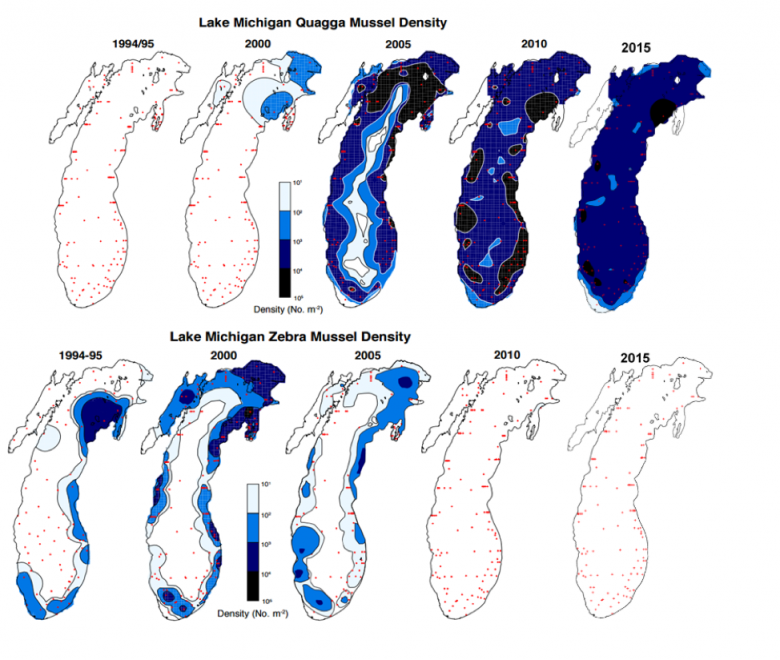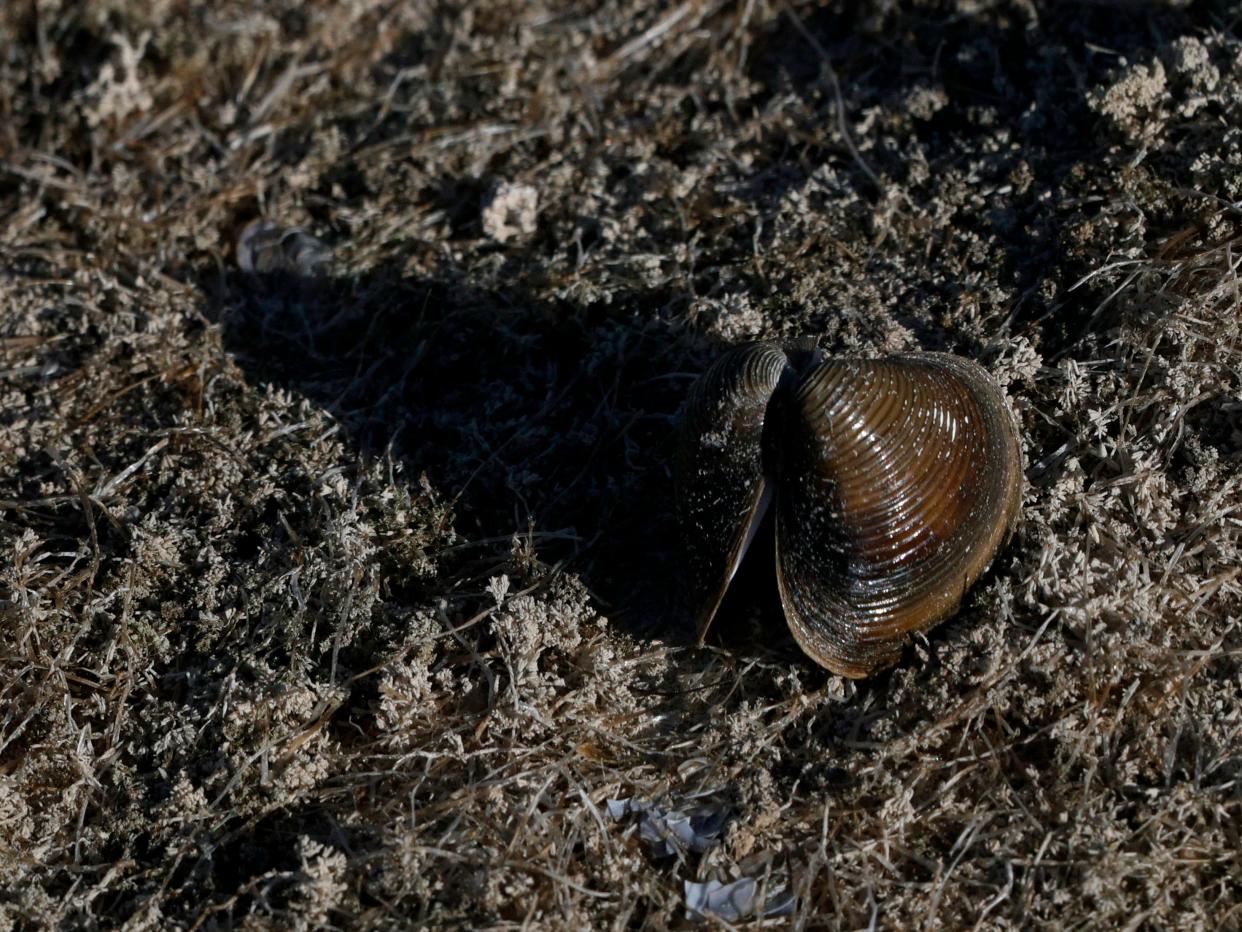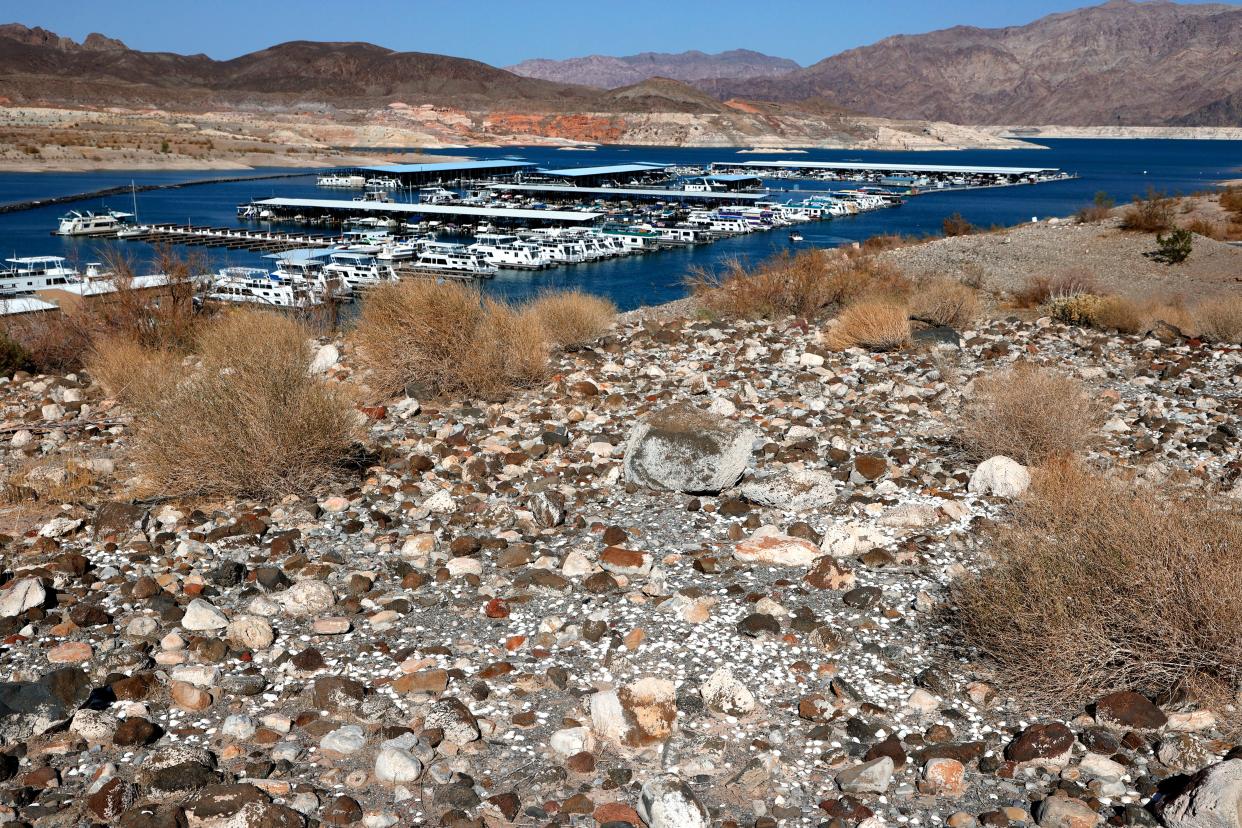'Deeply disturbing news.' Invasive quagga mussels documented in Geneva Lake; first finding in Wisconsin inland lake
Geneva Lake in Walworth County has long been known for its clear, deep water and scenic location.
Over the last century it even acquired the nickname "Newport of the West" for its lakeside estates owned by the Schwinn, Wrigley and other wealthy families.
The 5,262-acre lake remains among Wisconsin's most popular sites for boating.
And now it has an unwelcome distinction: it is the first Wisconsin inland lake documented with quagga mussels, according to state and local officials.
The invasive mussels were found in late July through monitoring conducted by the Geneva Lake Environmental Agency, said Jacob Schmidt, GLEA executive director. Identification of the mussels was later confirmed through laboratory testing coordinated by the Wisconsin Department of Natural Resources.
"This is deeply disturbing news," said Dan Butkus, president of Wisconsin Lakes, a non-profit organization that works to protect the state's waterbodies. "It's never good to have an invasive (species) spread, but we've been particularly concerned about quaggas."
Quagga mussels are classified in Wisconsin as an aquatic invasive species. The species is native to Europe and is thought to have been transported to the Great Lakes region via international shipping, likely in ballast water.
The approximately 1-inch-long mussels attach to bottom or other substrate and feed by filtering plankton from the water. They clog water pipes and have the potential to damage aquatic ecosystems and disrupt food webs.
For example, in Lake Michigan the quagga and its close relative the zebra mussel are linked to a significant decline in the yellow perch population since the mid-1990s, mostly by causing a lack of zooplankton for young perch to eat.
But the quagga is known to many as the "bigger and badder" cousin of the zebra. In recent decades in North American waters the quagga has shown the ability to live at greater depths, in colder water, at greater densities and on a wider variety of substrates.

In Lake Michigan zebra mussels made up 98% of mussels in 2000 but just five years later the numbers had reversed, according to the Center for Invasive Species Research at the University of California Riverside. Zebra mussels were found at densities of 899 per square meter, but quagga mussels now dominate at 7,790 mussels per square meter. Quagga mussels have been found at depths of up to 540 feet in Lake Michigan where they filter feed year round.
Scientists and resource managers are concerned quagga mussels will have similar success colonizing inland lakes.
"Knowing what we know about quaggas and their ability to live on soft bottoms, it will be very important to monitor how they do in inland lakes," said Jake Vander Zanden, professor and director of the Center of Limnology at UW-Madison.
Zebra mussels typically attach only to hard surfaces, including rocks and dock pilings.
But most inland lakes are dominated by soft substrate. Lake Mendota in Madison, for example, is 95% mud and sand, Vander Zanden said. And Geneva Lake is 95% sand and 5% gravel, according to the DNR.
"So when you bring in quagga mussels they could colonize a much greater amount of habitat," Vander Zanden said. "And their impact could be greater."
To date, quagga mussels have been documented in a few inland lakes in Michigan and New York and in the Mississippi River. However no study has been conducted on their potential impacts. It's not known, for example, whether water conditions such as pH, calcium and other minerals in inland lakes will allow quaggas to thrive as they are in Lake Michigan.
Although it can't be proven, quagga mussels most likely were transported into Geneva Lake the same way the species arrived in the Great Lakes - via a boat.
Short distance spread between waters most likely occurs through the movement of recreational boats, according to the Center for Invasive Species Research. It occurs when boats are not cleaned, flushed and dried adequately and contaminated watercraft are then moved from infested waterways to others where mussels are accidentally introduced, according to the center.
The mussels can survive for 3 to 5 days out of water, according to the center.

The mussels or their young (called veligers) can be transported on a boat hull, in a live well, in a bilge, on trailer surfaces or in ballast tanks.
Once introduced to a lake or river, there are no viable options for eradication of quagga or zebra mussels, according to the DNR.
The Geneva Lake Environmental Agency has been active in attempts to educate the public about the threats posed by AIS and to provide equipment to help clean their boats. In 2023 the GLEA used funds from a DNR surface water grant to purchase and install four boat cleaning units at public launches on the lake.
The CD3 - clean, drain, dry and dispose - units are designed to assist boaters in removing all aquatic plants and animals from boats and trailers and hopefully prevent the spread of aquatic invasive species. However the units do not flush the ballast tanks on wake boats, a significant source of concern for the spread of AIS.
The four stationary units replaced one large traveling unit used since 2021.
The agency has also surveyed boaters and documented boating pressure on Geneva Lake.

In 2023 it found 5,167 watercraft docked, moored, or available for in-out service on Geneva Lake, including a year-over-year increase of 19% in motorized boats and about twice as many personal watercraft such as jet skis and wave runners, according to a GLEA report.
In a 2023 survey of boaters at Geneva Lake public launches the agency found 24% of boats had been used on a different waterbody within the last five days. The responses included 45 other waters.
The GLEA has conducted assessments for invasive mussels since 1995 when zebra mussels were found in the lake.
The quagga mussels found this year were adults; the size and number of mussels found indicate the species has been in the lake for two to three years, Schmidt said.
The GLEA will continue monitoring the lake, Schmidt said, as well as consider adding equipment to sterilize boats similar to that used in western states.
The DNR did not immediately respond to requests for comment on the quagga mussel finding in Geneva Lake.
This article originally appeared on Milwaukee Journal Sentinel: Quagga mussels found in Geneva Lake; first in a Wisconsin inland lake
